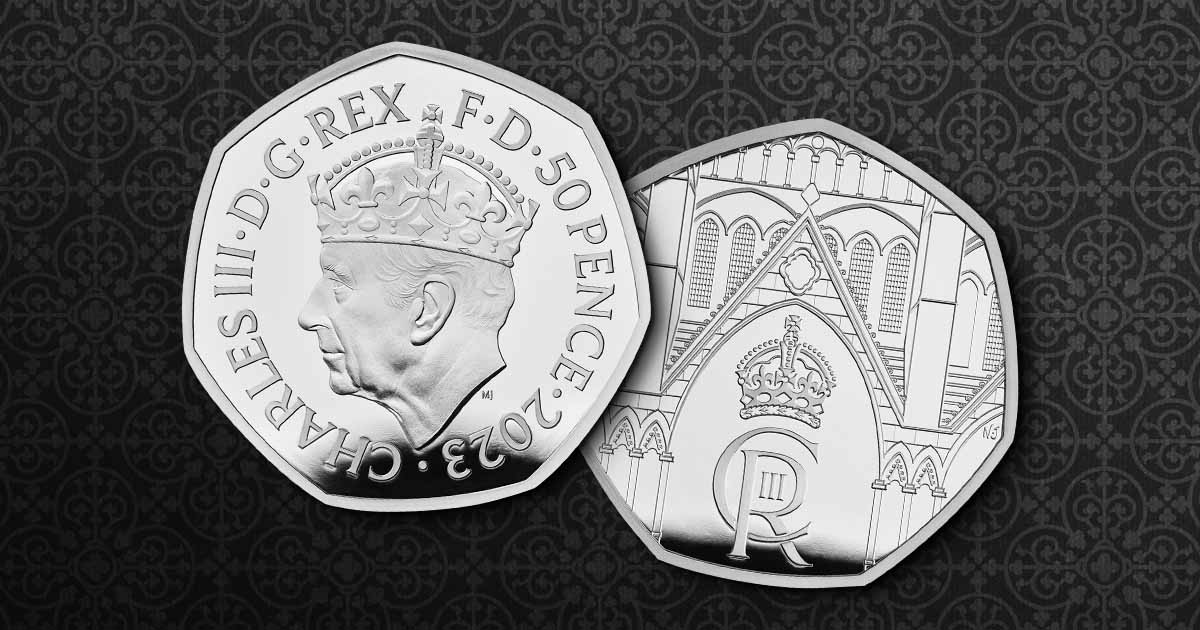
Piedfort coins are thick coins. They are typically twice the thickness of standard-issue coins.
They often contain twice as much precious metal as similar non-piedfort coins. This, along with their low mintages, adds a substantial level of value over a standard silver or gold bullion coin and makes them desirable for collectors.
Piedfort coins are not regularly used in commerce, as they are predominantly produced for presentation by mint officials and coin collectors.
If you have spent much time looking at contemporary coins, especially European coins, you may have seen piedfort coins and wondered about them.
Their name comes from the French for the heavy weight (literal: heavy foot), and the name was recorded as the two-word pied fort in 1774. By 1802, it had spread to American auction houses, where groups like Sotheby’s were using the term piedfort in auction catalogs.
The History of Piedfort Coins
The first piedfort coins were made in France in the 12th century and later spread to Great Britain, although the practice of issuing piedfort coins was less common there for some time.
The early piedforts were possibly created as an early form of proof coins or have served a similar purpose. According to the Royal Mint, early piedfort coins were struck for engravers to use while making coin dies.
It is also possible that they were made as pattern coins for administrative review or even as reckoning counters, which were used by medieval officials for things like accounting. Producing them with double thickness was likely done to prevent them from mixing in with circulating coins.
These early piedfort coins would have been rare, making them exquisite gifts from royalty to other royal families and members of nobility. French rules dating back to 1355 called the ‘droit de pied fort’ detailed who was entitled to piedfort coins featuring new designs.
After a brief two centuries of piedfort coin production, Great Britain ceased minting piedfort coins in 1588. France discontinued their production of piedfort coins in the mid-1700s.
By 1890, France was again producing heavy weight coins, and less than 100 years later, Great Britain began issuing piedfort coins again in 1982.
In 1988, China began producing a small number of piedfort coins, including Gold and Silver Pandas and the Lunar Series. These mintages are kept in the tens of thousands, making them rare and valuable.
Today, commemorative piedfort coins from the Royal Mint, like those produced to commemorate the coronation of King Charles III, are excellent collectors items.
The Monaie de Paris still produces piedfort coins like this handsome 5 cetime Liberty, as well as other mints like the Royal Australian Mint and Royal Canadian Mint. Most piedfort coins produced today are Proof coins but you would not want to spend non-Proof piedfort coins to pay for coffee.
How to Identify Piedfort Coins in Your Collection
If you think there are coins in your collection that may be piedfort coins, here are some easy ways to identify them.
- Weight and Thickness. The most readily apparent characteristic of a piedfort coin is its thickness. It should be about twice the thickness of a coin with the same diameter. Is it noticeably heavier than coins with a similar diameter? They will not all be exactly twice the weight but will be significantly heavier.
- Edge Inscriptions. Many piedfort coins include lettering along the edge of the coin. This may include the coin’s denomination, year of issue, and words like PIERDFORT or even DOUBLE THICKNESS. Most but not all piedfort coins have reeded edges.
- Documentation. If you purchased the coin new or from a trusted seller and it came with packaging and documentation, examine the documentation. Piedfort coins often come with documentation labeling them as such.
- Research. Consult online resources like coin catalogs and search for information that is specific to the coin in question.
- Ask an Expert. If all else fails, seek advice from dealers, more experienced collectors, and numismatists. They may have the experience to provide insight that will help.
For nearly 700 years, piedfort coins have been held in high regard for their beauty, value, and rarity.
Whether you collect every issue from the Royal Mint or enjoy one design, piedfort coins are characterized by their thickness, historic significance, and higher precious metal content.




